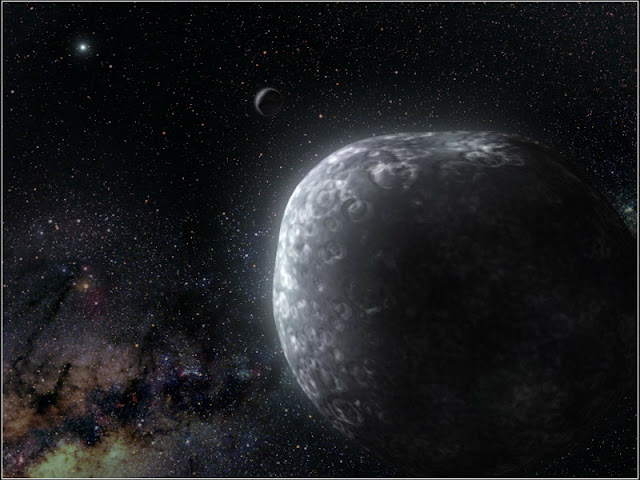 |
| Image: Artist's view of Kuiper belt object. Credit: NASA and G. Bacon (STSci) |
Kuiper Belt objects with absolute magnitude less than 3 (radius >500 km), the dwarf planets, have a range of different ice/rock ratios, and are more rock-rich than their smaller counterparts. Many of these objects have moons, which suggests that collisions may have played a role in modifying their compositions.
In a recent paper (Barr & Schwamb 2016) the authors show that the dwarf planets fall into two categories when analysed by their mean densities and satellite-to-primary size ratio. Systems with large moons, such as Pluto/Charon and Orcus/Vanth, can form in low-velocity grazing collisions in which both bodies retain their compositions.
They propose that these systems retain a primordial composition, with a density of about 1.8 g/cm3. Triton, thought to be a captured KBO, could have lost enough ice during its early orbital evolution to explain its rock-enrichment relative to the primordial material. Systems with small moons, Eris, Haumea, and Quaoar, formed from a different type of collision in which icy material, perhaps a few tens of percent of the total colliding mass, is lost. The fragments would not remain in physical or dynamical proximity to the parent body. The ice loss process has not yet been demonstrated numerically, which could be due to the paucity of KBO origin simulations, or missing physical processes in the impact models. If our hypothesis is correct, we predict that large KBOs with small moons should be denser than the primordial material, and that the mean density of Orcus should be close to the primordial value.
- Barr & Schwamb 2016 (preprint) - Interpreting the Densities of the Kuiper Belt's Dwarf Planets - (arXiv)

Comments
Post a Comment